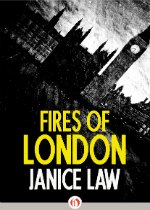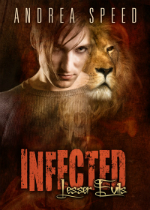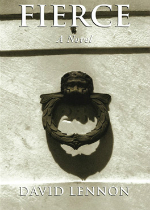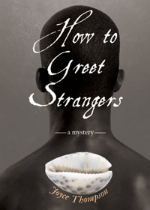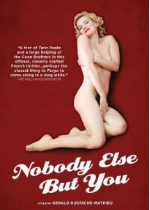GunnShots: Winter 2013
Author: Drewey Wayne Gunn
February 25, 2013
Several winter evenings passed enjoyably because of new mysteries from Sam Cameron, Janice Law, David Lennon, Andrea Speed, and Joyce Thompson. Several times, in fact, I missed my usual bedtime because I had become so engrossed in the tale unfolding for me. Though very different in terms of plots and characters, thinking back I see they have one thing in common: while they were entertaining me, they made me think and feel. It is not lost upon me that four of the five authors are women. Given the flood of m/m romances these days, let me say up front that none of these novels fits the description (though Speed’s series is marketed as such). All these authors are interested in psychological truth rather than in titillation. Sex occurs, but never in detail and only as part of what drives the characters in a search for truth. The same comment applies to the heterosexual protagonist of the one new film mystery I found this winter. I wanted to see it for its take on the Marilyn Monroe legend and was surprised to discover that it also fits into this column. So here they are, in the order in which the books were published rather than that in which I read them, with some comments about the movie at the end.
A New Celebrity Sleuth
To the exceedingly small number of gay celebrity sleuths (Christopher Marlowe, Oscar Wilde), we can now add Francis Bacon. He debuts in one of the best gay murder mysteries of 2012, Janice Law’s Fires of London. Set during the early days of the Blitz, Bacon in his role as an air raid warden literally stumbles over the body of a rentboy whose throat has been slashed. The painter is interrogated by a bent inspector whom Bacon has encountered while the police officer was engaged in what we would now call the down-low and who in fact could be the murderer himself. As other murders follow, Bacon suspects he may be a target now, especially when someone breaks into his home and threatens his beloved childhood nanny, whom he has taken in. He sets out to unmask the killer before he himself is killed. To this end he uses both his eye as an artist and his knowledge of the seedier outlets for sex in the besieged capital.
The novel draws a vivid portrait of London under attack. It captures both the excitement of anonymous sexual encounters under blackout conditions and the sense of ever-present danger from the aerial bombardment. It demonstrates the continuing vulnerability of homosexuals because of the Criminal Law Amendment Act of 1885 when Bacon uncovers a blackmail ring. All this is drawn so convincingly that the reader feels it could indeed be a unrecorded episode in the painter’s life. I read Michael Peppiatt’s biography Francis Bacon: Anatomy of an Enigma, 1996, a year or so ago. Bacon did indeed suffer from asthma, which prevented his serving in the military. He was in fact a warden. And he and his nanny did run an illegal gambling racket from his home. I am puzzled why Law changed the name of his lover Eric Hall to Arnold. But the impressions I gained from Peppiatt, added to the portrayal of an older Bacon in John Maybury’s incomparable film Love Is the Devil, 1998 (with Derek Jacobi and Daniel Craig), made me appreciate Law’s achievement all the more.
At base, it is a conventional murder mystery. It’s not quite a cozy, though the cast of characters is fairly small. On reflection, one can see that the clues have been fairly integrated into the story, which Bacon narrates in his own voice. The plot is built carefully; the solution is logical; and the denouement is haunting in its intensity. This is my first encounter with Law. I find that she has published a series with a female sleuth, Anna Peters, as well as other historical novels. This, however, seems to be her first work with a gay slant. I wonder if it will be a standalone or the beginning of a new series. Bacon’s messy life certainly offers loads of possibilities.
Local Color
Reading Sam Cameron’s The Secret of Othello, the second in her Fisher Key Adventure series for young adults, takes me back to my teen years. The 18-year-old twins, Steven and Denny Anderson, however, have problems that Rick Brant and Don Scott never had. Sexual problems, of course. Can straight Steven keep to his vow of no sex with three of the cutest island teenagers pursuing him? And will gay Denny ever make it to bed with Brian before he has to leave for the Coast Guard Academy? Each time just as he thinks success is at hand, something interferes in best sitcom fashion. The mystery — why is NASA so interested in recovering a mislaunched satellite? — does not drive the plot so much as do Brian’s dilemma and both twins having to balance family versus their individual needs, especially in dealing with their less than gay-supportive Aunt Riza. It’s a pretty good read for adults, but I would wager that it has lots to help its intended readership in modeling how to deal with and sometimes stand up against the adult world. Despite an occasional slipup, the twins show more maturity than do some of the grown-ups and a great deal of pluck in dealing with dangerous situations. The scene where they go for their prescheduled black belt tests in karate — after both, especially Denny, have been injured when kidnapped — is particularly heart-warming and completely believable given what we have seen of the young men’s character. I hope this was a present for many a gay teenager last Christmas. If not, keep it in mind for upcoming birthdays.
Myth-Making
Cross-genre mysteries are the hardest to unearth since, almost invariably, they are classified according to the non-mystery genre to which they belong. Yet some exciting work has emerged with these hybrids: Manna Francis’s European Administration dystopia series, Lynn Flewelling’s Nightrunner series, Tanya Huff’s Blood series and Smoke trilogy, Melissa Scott and Lisa A. Barnett’s Point series, and not least Andrea Speed’s continuing Infected series. What makes them all particularly exciting is the way their main characters evolve, change as a result of what happens to them, so unlike many stuck-in-the-rut noir series detectives. If I am especially partial to Speed’s Roan McKichan, it arises from Roan’s greater self-awareness of his flawed nature and his attempts to cope with what is innate to his being, at the same time that he finds himself in a socio-biological framework that is likewise evolving. Though each story stands on its own, more than with most series its readers really should read the works in sequence.
For those who have not read my earlier reviews, let me recap the basic myth that Speed has created. Drawing on obvious parallels to the HIV infection, a mysterious virus has struck humans which turns them into various species of werecats. For most of their existence, they appear to be normal humans, but periodically they must transform into their cat equivalent. For their own safety, most have provided themselves a secure dungeon in which to ride out the transformation. They are protected in their human form, but in their transformed state, humans are permitted to kill them in order to protect themselves. A whole cult has grown up around their existence, and some humans deliberately infect themselves. Most of the infected have contacted the virus unknowingly, but Roan is unusual in that he was born a werelion. He also has discovered, across the series, that he is unusual in being able to transform out of cycle. The problem has become that the lion now appears to want to take over the human altogether. Surrounding Roan are some of the most engaging humans, including recently an entire ice hockey team, that a reader could hope to meet.
By occupation a private detective, though often used as a special consultant by the police (with whom he briefly served) when confronted with cat problems, Roan confronts a new mystery in each of the novels. Infected: Lesser Evils is the sixth book in the series (though there have actually been ten stories, two being collected in four of the six). It seems to occupy a pivotal position. Some of the cases Roan is called upon to solve are closed, but others are left open. Here the myth reigns supreme: great transformations occur, and more clearly than before the callboy Holden and the werecat Roan come to resemble each other. Dylan’s Buddhist beliefs are tested, but Roan’s partner takes on new strengths as he copes with what is happening to Roan’s body. I keep checking online hoping to find the next book in the series has been posted.
A Series’ Finale
Had I not finished my “Celebration” column (posted Jan. 7) long before David Lennon’s new novel appeared, his Quarter Boys series might well have replaced one of my candidates for ten best. Fierce is, well, a fierce ending to a series that began only three years ago. It is almost as if the author was haunted by a story that had to be told, and the volumes just spilled out. It is also obvious, even more than before, that the series forms a hexalogy with a story arc that tightly unites the six volumes from beginning to end, with variations on a small number of themes. The present novel stands firmly on its own, but the reader will gain much from reading them in order. Though the heroes are Michel Doucette and Alexandra (Sassy) Jones, New Orleans police officers who become private investigators, the spirit of one of the Quarter boys, Joel Faulkner, infuses the series from beginning to end. Common themes are child abuse, deception, manipulation, parenting, growth and change. Evil seems innate to some individuals; certainly, it is a very real and very malignant force against which one must remain vigilant. Michel and Sassy are on a quest for self-authenticity. Lennon is realist enough — an existentialist at core — to know that the quest is not easy and that happy endings may be illusionary.
The present case begins when a manipulative mother hires Michel to find her missing son. The thing is, the son apparently is trying to get away from his mother. Then murder occurs. Kids getting a thrill from dressing up as goths, drug dealers, ugly meetings with the mother spin the reader along, leaving it less and less clear whether the son is victim or victimizer or both. In a novel imbued with death, the grim showdown occurs appropriately in a condemned building that formerly was a funeral home. The case provides the ostensible plot, but the novel is actually about connections: making them, for both good and bad; losing them; being fooled by them; maintaining them, again for good or bad. Michel in his grief about Joel’s loss has pushed his friends away and is drinking and smoking far too much. Sassy, between the last novel and this one, has been treated for cervical cancer. Her fear of her own body has blinded her to her new stepson’s needs and put a strain on her marriage. Chance, staying true to his name, offers a chance for change. I would hardly call the novel cheerful, but it is honest and, though the ending is somewhat open, ultimately it is optimistic because of its integrity.
Santeria Mischief
Good writing can use any subject to create a page-turner. True, Steve Neil Johnson’s two recent mysteries incorporating santeria beliefs into their plots, prepared me for Joyce Thompson’s How to Greet Strangers, but it is still not a subject in itself that I would pursue out of any interest. However, I could not put down this very unusual mystery and even grew to accept that spirits could manifest themselves into the believers’ lives. Given my usual attitude towards the supernatural in a realistic novel, that is quite an accomplishment on the author’s part. The novel is too complex, too nuanced to sum up in a few sentences. To describe the hero alone, one must interweave first-person narrator, santeria initiate into the priesthood, African American drag artist, Bay Area law school graduate (who declined to take the bar examination), grieving AIDS-widow, himself HIV-positive, surfer, refugee from Texas, UC Santa Cruz night watchman, volunteer at a health care clinic, murder suspect turned police snitch, and amateur sleuth seeking to uncover the murders of an Oakland priestess and her followers before he himself is killed. Yet the reader has no problem following the story, even through the many flashbacks that explain Archer Barron’s present situation.
The priestess, Michaela de Estrella, was a consummate con artist. Many people had cause to kill her, not least because her insistence that she could cure various diseases led to people’s deaths, including Lance, Archer’s lover, and now, as the story begins, the infant child of Carlos and Rosario. Archer has tried to get away from the cult’s influence, but he is dragged back into the midst of it and various intrigues growing out of it. As a result, he not only reconnects with members of his former religious community but also with a law school friend, Lance’s former lover, who unknowingly infected him and thereby Archer. He meets a straight Oakland detective who takes a fatherly interest in him after he is convinced that Archer is not the killer. And he connects with a syndicated blogger who is fascinated by gender politics. Having read too many murder mysteries, I was able to divine who killed Michaela early on. The final confrontation, however, is the one moment I felt the author faltered, giving in to melodrama to the detriment of psychological authenticity. Nonetheless, I look forward to the next stage of what she promises will be a trilogy.
Film Mystery: Marilyn Reincarnated
Gerald Hustache-Mathieu and Juliette Sales’s 2011 unpublished French screenplay Poupoupidou (called Nobody Else but You in its American release) is a quite ingenious murder mystery in all sorts of ways. It begins with the discovery of the corpse of Candice Lecoeur (actor Sophie Quinton), the blonde icon (and Marilyn lookalike) promoting a local cheese. She has apparently taken an overdose of sleeping pills in the middle of an empty field covered with snow. Mystery writer David Rousseau (Jean-Paul Rouve) by pure happenstance happens to be passing by as the corpse is loaded up; he hears more when he puts up for the evening in the nearby town and realizes that it has to be murder. (Detail: even though she is clutching the vial with the pills in it, there is nothing liquid she could have used to take them. Psychology: who kills herself in the middle of a field with sleeping pills anyway?) As far as the local police are concerned though, it is a closed case. So firmly closed that his suspicions are deepened even more.
He strikes up an uneasy friendship with a brigadier, Bruno Leloup (Guillaume Gouix), who also has his suspicions. As the two men investigate, strange “accidents” begin to happen to Rousseau. The plot, however, from the beginning has been out of the ordinary. Candice Lecoeur believed that in a previous life she was Marilyn Monroe, and her life and death had in fact started resembling Marilyn’s in uncanny detail as we discover through flashbacks, ghostly appearances, and Rousseau’s digging into the facts. Okay, you may be asking by now, why include the film in a gay mystery column? Well, about halfway through, your suspicions that one of the chief characters is closeted will be confirmed. It’s very subtly done, and if you blink you will miss it. But the disclosure adds a whole new layer to the plot. One downside for francophones: it is impossible to turn off the subtitles. At least the translation is generally well done.
Fires of London
by Janice Law
MysteriousPress.com/Open Road
Paperback, 9781453260999, 186 pp.
September 2012
The Secret of Othello
by Sam Cameron
Bold Strokes Books
Paperback, 9781602827424, 264 pp.
September 2012
Infected: Lesser Evils
by Andrea Speed
Dreamspinner
Paperback, 9781623800123, 376 pp.
October 2012
Fierce
by David Lennon
Blue Spike Publishing
Paperback, 9781481164719, 305 pp.
January 2013
How to Greet Strangers
by Joyce Thompson
Lethe Press
Paperback, 9781590212714, 234 pp.
February 2013
Nobody Else But You (Poupoupidou)
Written and directed by Gerald Hustache-Mathieu
English subtitles by Julie Meyer
First Run Features
DVD, B00804ZAQ2, 102 min.
October 2012

